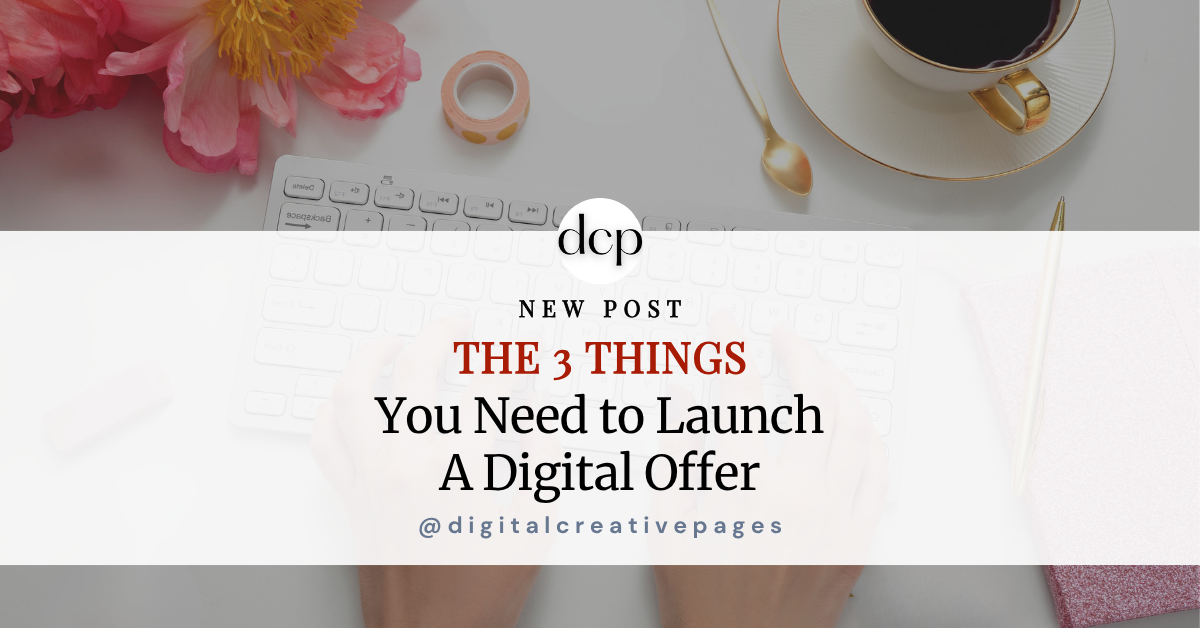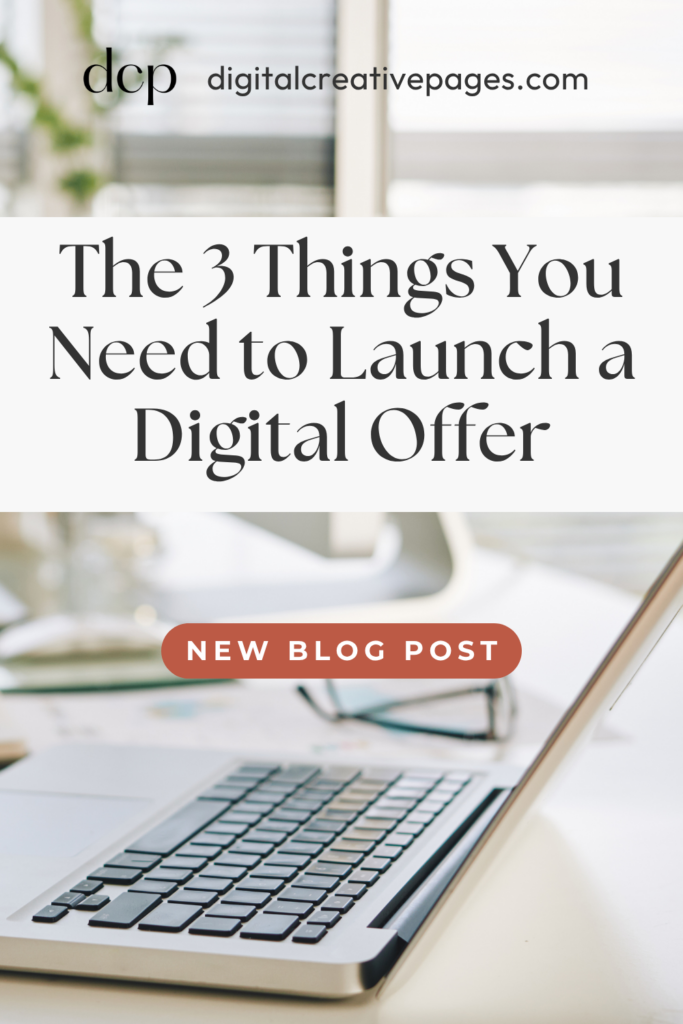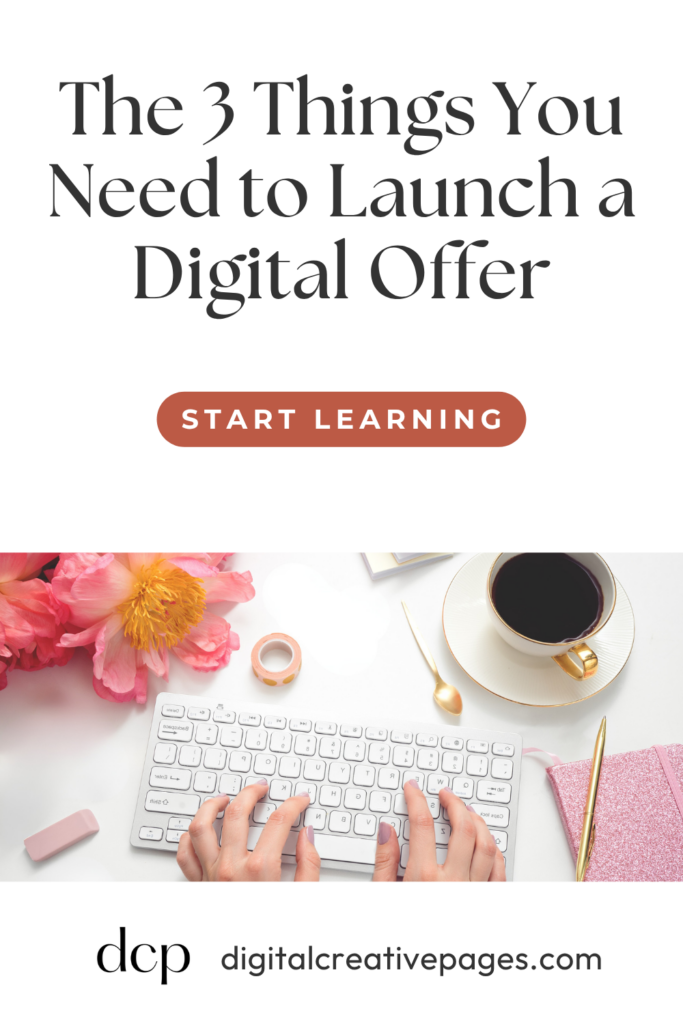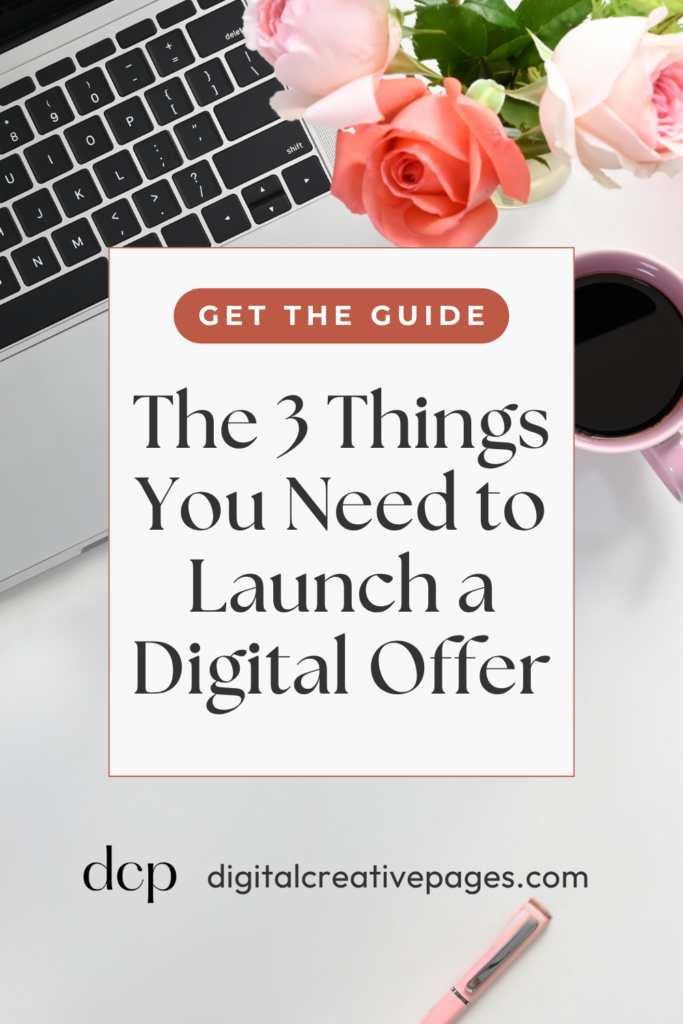Hey there. So, you’ve been dreaming about launching your own digital product—maybe a mini course, a template pack, a downloadable guide, or even a workshop replay. But then your brain goes into full-on overdrive:
“Do I need a full website? A big email list? Fancy software? A team?”
I’ve been there too. And let me just say it plain: launching your first digital offer doesn’t require a huge audience, thousands of dollars, or 14 complicated tools. In fact, there are just three things you really need to get started—and I’m going to break them down for you today.
Whether you’re a service-based business owner, content creator, coach, or multi-passionate entrepreneur, this is your reminder that simple can be powerful. Let’s dive in.
Pin this for later
1. A Clear Problem You’re Solving
Before you get into platforms, pricing, or promo strategies, you need to get laser clear on this one thing: what problem is your offer solving?
Digital offers don’t sell because they’re cute. They sell because they solve. That could be saving someone time, helping them make money, reducing overwhelm, giving clarity, or teaching a skill. But it has to feel like a real solution to your ideal audience.
Here’s the good news—you don’t need to reinvent the wheel. Often, the best ideas come from things you’ve already created for yourself or your clients.
Examples of clear, problem-solving offers:
- A Pinterest template pack for service providers tired of DIYing bad graphics
- A content calendar for new business owners feeling overwhelmed
- A guide for beginner coaches on how to onboard their first clients
Pro Tip: If you’re stuck, think about the version of you from 1-2 years ago. What did you wish existed back then?
Related Post – How to Start a Service-Based Business in 30 Minutes a Day
Ask yourself:
- What is my audience struggling with right now?
- What quick win can I help them achieve?
- Can this be consumed in under 2 hours or implemented in a weekend?
The more specific your offer, the easier it is to sell.
2. A Simple Way to Deliver It
You do not need an entire tech stack to launch. Most beginner-friendly digital products can be created in tools you already use (or that are free to start with).
Let’s bust the myth: delivery can be easy. You just need one place to host or send the product, and one place to take payment.
Here are a few beginner-friendly platforms I used when I started:
- Canva: to design templates, PDFs, checklists
- Gumroad or Payhip: to list your product and collect payments
- Google Drive: for easy file delivery
Pro Tip: Keep it digital and downloadable—PDFs, templates, notion boards, mini video trainings. This reduces complexity and support needs.
Delivery tips that save time and sanity:
- Offer instant downloads
- Include a quick-start guide so buyers know what to do next
- Use a thank-you page or auto-email to reinforce value + next steps
Your goal: make it easy for someone to buy and start using your product within minutes.
3. A Way to Talk About It Consistently
Even the best product won’t sell if no one knows about it. That’s where content comes in—not more content, but intentional, magnetic content that speaks to the transformation your offer provides.
You don’t need to go full-on launch mode. What you do need is repetition, relevance, and relationship. You can build interest by simply sharing stories, tips, and behind-the-scenes around your offer.
Pin this for later
Why Starting with a Low-Ticket Offer Is a Smart Move
If you’re just starting out, I highly recommend launching with a low-ticket offer under $100—ideally under $40. Here’s why: low-ticket products are easier to sell to new audiences. People don’t overthink a $27 template or a $39 guide—they see the value, and if it resonates, they buy. There’s less resistance, fewer refund requests, and honestly, less pressure on you to “get it perfect.”
Also, you can test your messaging, gather feedback, and refine your offer while making real sales. Plus, a well-positioned low-ticket product becomes an entry point into your world—making it easier to upsell or guide them into your higher-tier services later on.
Pro Tip: Pick a price that feels like a no-brainer for your ideal client. That $27 digital planner might be the doorway to your $300 course.
Before I got into creating content, I reminded myself: selling doesn’t always look like a pitch. It often looks like helping, sharing, and showing up with honesty and care.
Here’s how I started talking about my digital products:
- Created the product based on what would have helped me 7 years ago
- Uploaded it to my digital shop right away—no waiting for perfect
- Shared it in a casual, honest way on Instagram Stories and in my captions
- Designed and pinned it on Pinterest with keywords my audience searches linking to my product page. I created multiple pins and publish them regularly
- Wrote an email to my subscriber list explaining how it could help them
- Skipped the carousel posts for now—it’s okay to not use every format
- Didn’t chase feedback before launching—I trusted my experience and instinct
Content that sells doesn’t feel like selling. It feels like helping.
Try these content ideas:
- “This product was born because I kept seeing…”
- “If you’re tired of X, here’s a faster way to…”
- “A behind-the-scenes of how I use my own template”
- “3 mistakes people make when they try to DIY this”
Pro Tip: Use testimonials—even early ones. Ask a friend or follower to try it in exchange for feedback, and share their wins.
What You Don’t Need to Get Started
I want to be clear: the things you think you need might just be stalling you. They often become a distraction or delay tactic. Instead of perfecting everything before launching, focus on creating and sharing something real—even if it’s a little scrappy.
You do not need:
- A full website
- A 100-email welcome funnel
- A professional photoshoot
- 10K followers
- Perfection
You do need:
- Clarity
- Simplicity
- A willingness to show up even if it feels messy
Pro Tip: Done is better than perfect. You can refine later. The only thing you can’t improve is the thing you never launch.
Related Post – Why I Didn’t Wait for 10K Followers to Start Selling
The Mindset That Helps You Launch Without Burnout
This might be the most important part. I’ve seen so many creators get emotionally attached to the results of their product—so when it doesn’t immediately sell, they feel like they failed.
But here’s what helped me: I stayed connected while creating, but I detach after launching.
My digital offers are part of my business. They support my freedom and serve others. But they are not me. If a product sells slowly, I don’t spiral—I refine, re-share, or rest. Because sales are just one part of the bigger picture.
Let go of:
- Needing instant validation
- Measuring success in likes or launch days
- Making low sales mean you’re not good enough
Hold onto:
- Serving with intention
- Showing up even if it’s quiet
- Playing the long game
Pro Tip: Your digital product is a gift. Keep offering it with kindness, and the right people will find it.
You’re Closer Than You Think
If you’ve been waiting for a sign to start, girl—this is it.
You already have ideas. You already have value. And you already know what helped you in the past that could now help someone else.
So start small. Start simple. Start now.
You don’t need a full business plan, just a clear offer, a delivery method, and a way to talk about it.
Create something useful. Share it with heart. And let it grow.
You’ve got this.
MY TOP POSTS
Stay connected outside my social media with my weekly Newsletter – Digital Content Pages
My introducer post – check out why I chose Showit as my website builder here
Use my code DCP to get one 1.5 months free on Showit
Get all the resources for your social media and digital marketing without breaking the bank from my DCP Shop here
Pin this for later



